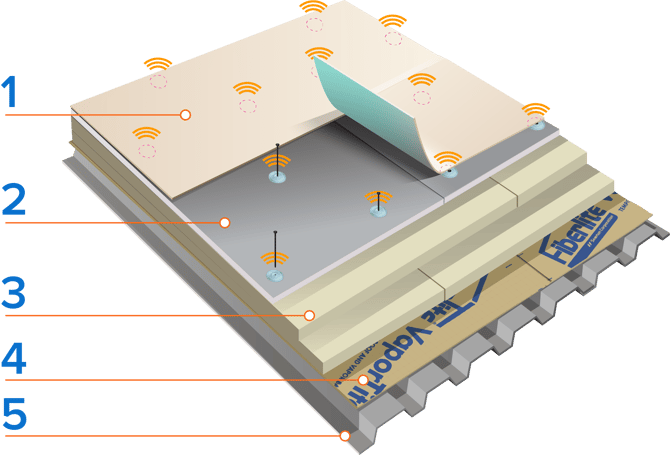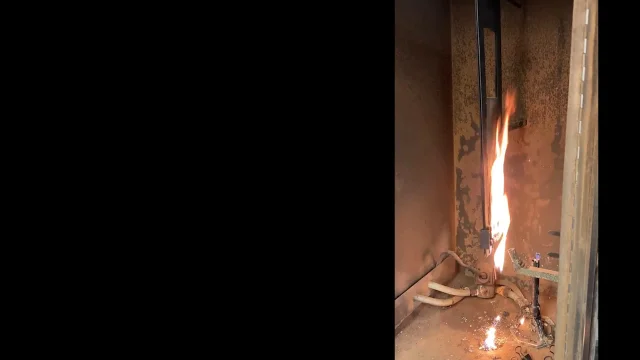
FiberTite’s 36-mil membrane features high tenacity base fabric and a proprietary KEE polymer coating for strong protection. Proprietary IW plates secure the membrane above through induction welding technology - and components below with strong mechanical fasteners, through to the deck.
Standard FiberTite systems feature a 1/2” DensDeck® fiberglass-coated gypsum cover board, for sturdy support.
At least 2 layers of 1-1/2” FTR-Value™ insulation is recommended for superior heat transfer stability.
VaporTite™ self-adhering vapor barrier can be applied to a primed surface or directly to the steel deck itself to help prevent moisture diffusion.

The purpose of the ASTM D6413 flame test is to determine if a fabric will continue to burn after the source of ignition is removed. A 12” long fabric sample is suspended above a methane flame for 12 seconds. After 12 seconds, the flame is turned off and the fabric sample is observed. The number of seconds that the fabric continues to burn is termed the afterflame time. The occurrence of melting material which is often flaming is also recorded.
In testing, the FiberTite 36 mil samples had an average afterflame time of 0.9 seconds and self-extinguished after the gas ignition flame was removed. As you can see in the video above, there are no flaming or burning drips.
The 60 mil TPO does not self-extinguish and molten coating drips from the samples and continues to burn until extinguished.
See RoofNav number 386371-0-0, External Fire rating, Wind Uplift, and Hail/impact Rating. Note: user must log into RoofNav.
Because the self-adhered vapor barrier is applied directly to the steel deck the above RoofNav number does not apply to internal fire rating requirement. For compliance with Section 2603 of the International Building Code, see UL Roof Deck Construction TGKX.123 for fire classification per UL 1256.
Puncture Test
The Truth Behind the Words
The Thickness Paradigm
Will Your Roof Withstand Very Severe Hail?